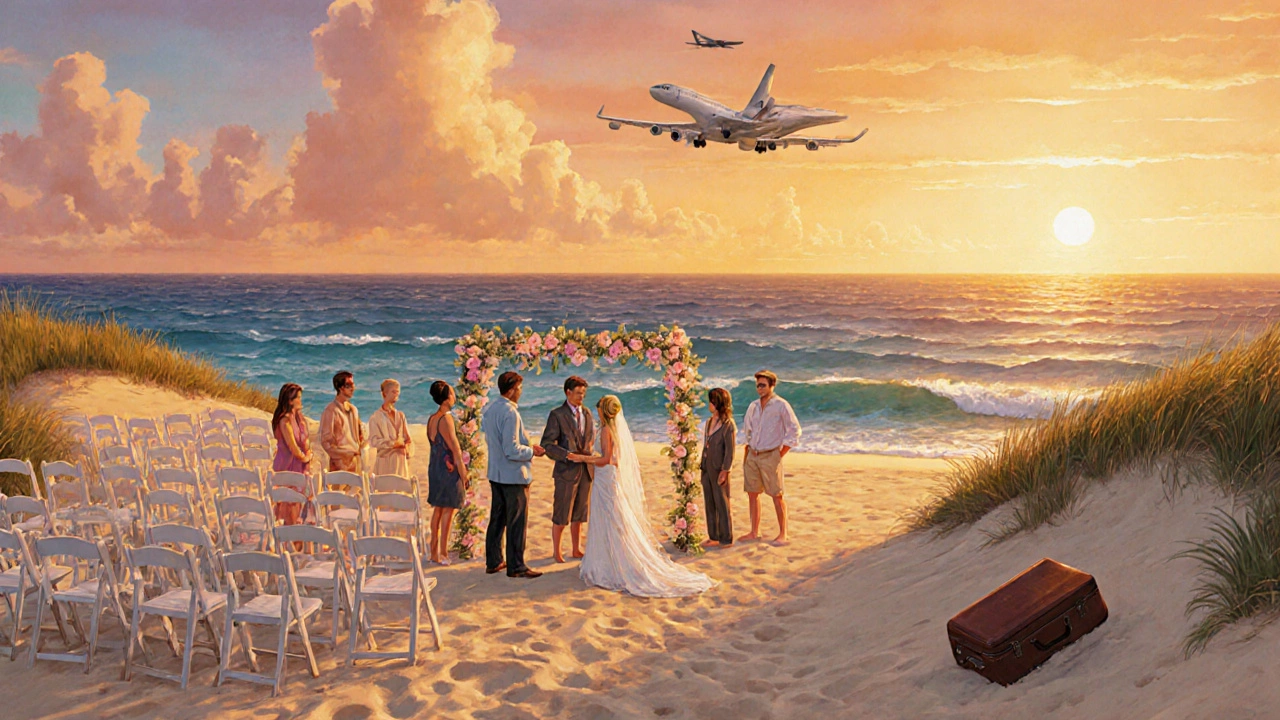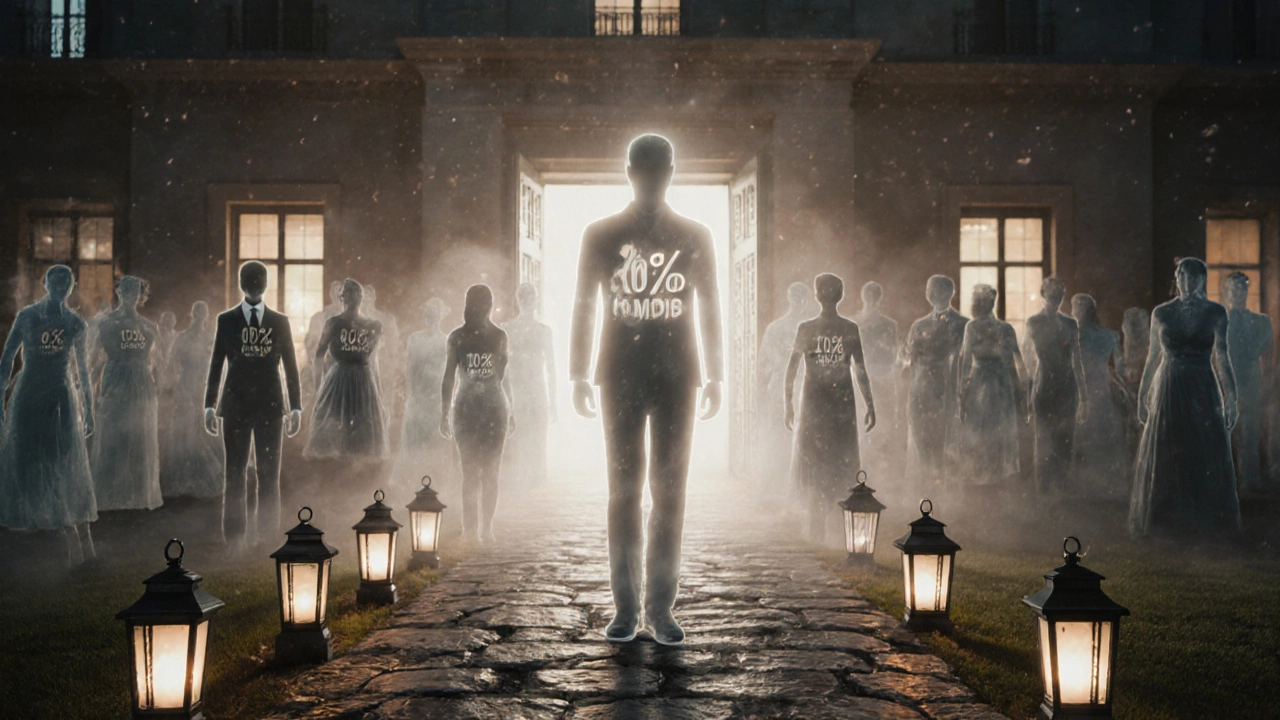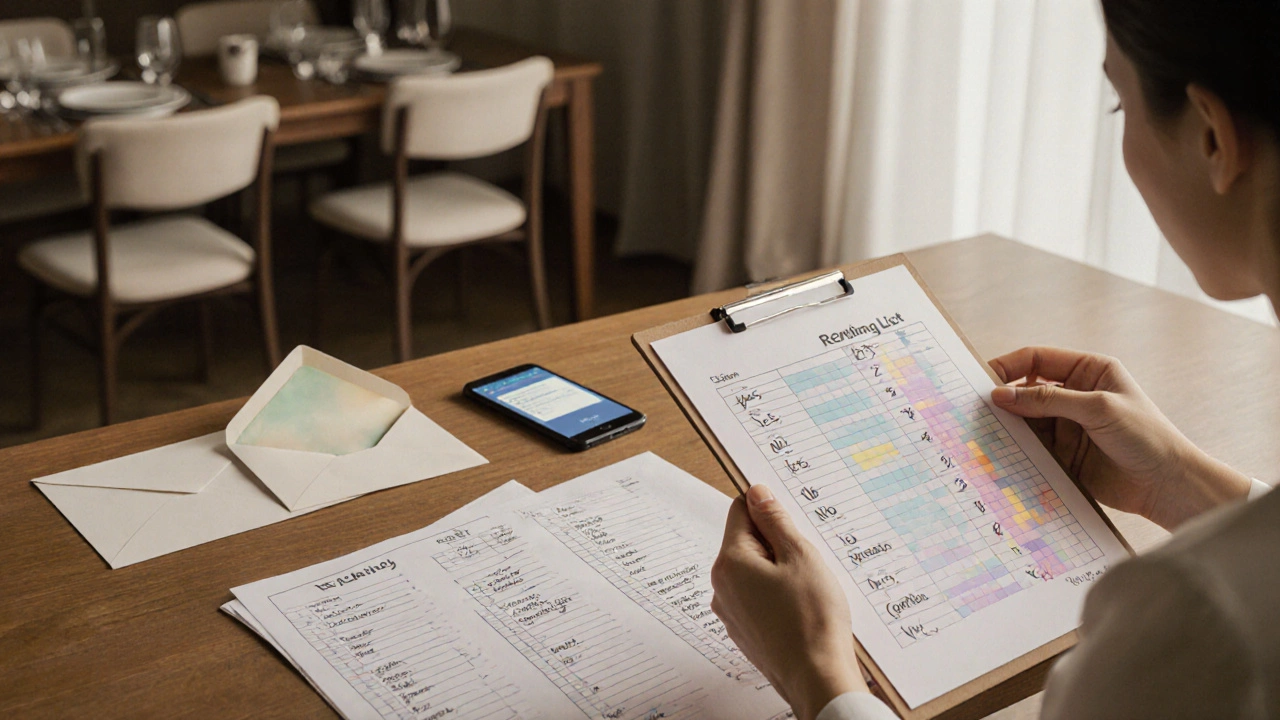Wedding Guest Attendance Calculator
Calculate Your Guest List
Use data from real weddings to plan your guest count
Results
Based on attendance rate:
- Invites to send:
- Expected attendance:
Why this matters: This accounts for the 28% of RSVP'd guests who don't show and 12% of guests who say no but show up.
How many people actually show up to your wedding when you send out invitations? If you’ve ever stared at your guest list wondering if that cousin who said "absolutely!" will really be there, you’re not alone. The truth? Not everyone who says yes comes. And not everyone who says no stays away. The real attendance rate for weddings is usually between 75% and 85%-but that number can swing wildly depending on how you plan.
Why Wedding Attendance Rates Vary So Much
There’s no single magic number. A destination wedding in Bali might only see 50% attendance. A local church ceremony with close family might hit 90%. The biggest factors? Distance, cost, timing, and how well you follow up.People say "yes" for all kinds of reasons: guilt, politeness, social pressure, or because they genuinely want to come but then something comes up-a sick kid, a work emergency, a broken car, or just plain forgetfulness. A 2024 survey of 2,200 couples in the U.S. found that 28% of guests who RSVP’d "yes" didn’t show up. That’s nearly one in three. Meanwhile, 12% of people who said "no" ended up showing up anyway, often uninvited.
How to Build a Realistic Guest List
Don’t just send out invites based on your dream number. Start with your budget and venue capacity. Then work backward.Here’s how most planners do it:
- Start with your absolute max number of guests your venue can hold.
- Subtract 20% to account for no-shows. That’s your target invite count.
- If you’re having a destination wedding, subtract 35-50% instead.
- If it’s a small, local event with mostly family and lifelong friends, subtract only 10-15%.
For example: if your venue holds 120 people and you want 100 guests, send invites to 125-130. If it’s a beach wedding in Hawaii and you’re inviting 150, send invites to 200-220. That way, you’re not stuck with empty chairs or scrambling for extra tables.
RSVPs Are Not Guarantees
Just because someone says "yes" doesn’t mean they’re coming. A 2023 study by The Knot found that guests who RSVP’d online were 18% more likely to show up than those who mailed in their responses. Why? Digital RSVPs come with reminders. Paper invites get lost in junk drawers.Set a clear RSVP deadline-three weeks before your wedding is ideal. Then, follow up:
- Call people who haven’t responded by the deadline. Don’t text. Call.
- Text your closest friends and family a week before the wedding: "We’re so excited you’re coming! Let us know if anything changes."
- Don’t assume the "maybe"s will come. They usually don’t.
Also, track your RSVPs in a simple spreadsheet. Mark who responded, who didn’t, who said yes, who said no. Color-code them. You’ll see patterns. Maybe your aunt’s side of the family always says yes but rarely shows. Adjust your planning accordingly.

Destination Weddings and No-Shows
If your wedding is far away, expect a big drop-off. The average attendance rate for destination weddings is around 60-70%. That’s not because people don’t care-it’s because flights, hotels, and time off work are expensive.Here’s what works:
- Send invites 6-8 months in advance.
- Offer a group hotel discount. People are more likely to come if they know they’ll save money.
- Include a simple itinerary. Show them what to expect-daytime events, casual dinners, the ceremony. It helps them plan.
- Don’t invite people who’ve never met you. If your college roommate hasn’t spoken to you in 10 years, they’re not coming. Save the money.
What About the "No-Shows" Who Show Up Anyway?
You’ll always have a few surprises. Someone’s ex shows up because they "just happened to be in town." Your coworker’s friend texts you the day before: "Can I bring my roommate?"Plan for 5-10 extra seats. Keep a few extra chairs, napkins, and place cards tucked away. You don’t need full meals for them-just enough to avoid awkwardness.
Some couples hire a "guest coordinator" for big weddings. That person handles last-minute additions, tracks RSVPs, and quietly manages overflow. It’s worth it if you’re spending over $20,000.

How to Handle the Emotional Side
It’s hard when someone you invited doesn’t come. You might feel hurt. You might feel like you wasted money.Here’s the reality: weddings are not about perfect attendance. They’re about the people who are there. The ones who show up? They chose to be there. That’s the real gift.
Don’t let the no-shows steal your joy. If your cousin didn’t come because they’re broke and embarrassed, that’s on them-not you. If your friend canceled last minute because their kid got sick, that’s life. Send them a card later. Thank them for trying.
Final Tip: The 80% Rule
The best rule of thumb? Plan for 80%. If you invite 100 people, expect 80 to show up. If you invite 200, expect 160. That’s the sweet spot for most local, traditional weddings.For destination weddings? Plan for 65%. For large, formal events with lots of distant relatives? Plan for 70%.
Once you know your expected attendance, lock in your catering, seating, and favors. Don’t wait until the last minute. The caterer won’t reduce your order because someone didn’t show. You’ll pay for it anyway.
And remember: the people who show up are the ones who love you. The rest? They’re just numbers on a list. Your day is about the ones who made the effort to be there. That’s what matters.
